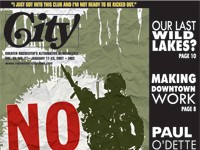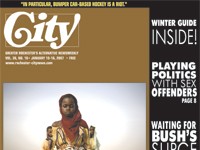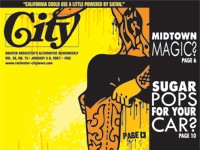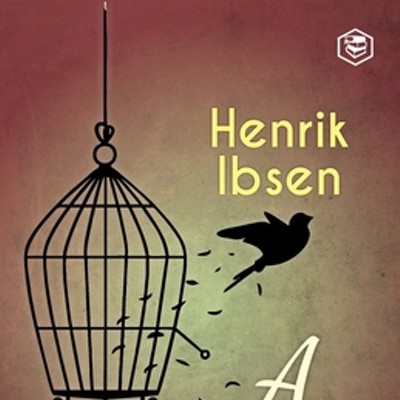[
{
"name": "500x250 Ad",
"insertPoint": "5",
"component": "15667920",
"parentWrapperClass": "",
"requiredCountToDisplay": "1"
}
]
"Getting married?" asks a webpage hosted by the Roman Catholic Diocese of Rochester. "The Church welcomes you and is delighted you are considering celebrating this time in your life in the presence of God.... Call your parish to begin the process."
This applies only to the laity, however. Roman Catholic priests and nuns who plan to marry or pursue love relationships are called to say goodbye.
But sometimes there's a reversal. Nuns and priests leave their vocations to stay in touch with their faith. The forbidden marriage leads to an engagement --- with the world, with a new spiritual critique, even with the Church.
Consider the life of one local ex-priest.
Jack Neary, a Greece resident, began his adulthood on a path frequently taken by local Catholic men: He graduated from Aquinas Institute in 1950, then went off to St. Michael's College, a Roman Catholic component of the University of Toronto. In 1961, he was ordained at St. Basil's, a seminary across from "St. Mike's." He also studied math at University College, a secular unit of U of T. The Toronto atmosphere was different from what most seminarians experience: "We weren't quite as isolated," he says.
The non-isolation led Neary far and wide. For a while, he was a schoolteacher in Toronto. Then in 1971, he left the priesthood to marry and moved south. He was a teacher and counselor in Lawton, Oklahoma, and later in Houston, Texas. His wife, Jean Neary, taught music at all levels, including college.
The couple retired a few years ago and moved back to the Rochester area. Jack also was active in Catholic parishes along the way. He recalls working in a 1960s "Model Cities" social welfare program in Oklahoma.
"I think married priests would add a lot to the Church," Neary says. "Marriage," he says, "is something that's very natural and good." The institution of marriage connects with two strands of reality, he says: "the God of Creation that's responsible for everything that is, and the redemptive order."
Following this line of thought, Neary says in effect that celibacy is an unnatural construct. It wasn't imposed until the year 1139, he says. "It was really because of property, property that was left to [priests'] offspring." In other words, the Church sought to increase its holdings by being sole heir.
Neary is a student of Church history, but he doesn't fixate on the past. He says he's a member of the national advocacy groups CORPUS and CITI. (See main article for more information.) "I don't think they've made much of a dent," he says, adding that the groups do offer much support for individuals. "Rome has a way of cutting people off," he says.
But Neary doesn't mean only those who challenge the rule of celibacy. The Pope and his circle, he says, have cut off respected dissenting theologians like Rochester native Charles Curran and the Europeans Hans Kung and Edward Schillebeeckx. Thinkers like these, says Neary, embody the reformist spirit of the Second Vatican Council.
But it's the thought of Creation Spirituality, as expressed by liberation theologian Matthew Fox, which most interests Neary. Fox --- who became an Episcopal priest after being thrown out of the Dominican order --- is founder and president of the Oakland-based University of Creation Spirituality. Describing his own life as "the making of a post-denominational priest," Fox echoes Christian mystics like Meister Eckhart and Hildegard of Bingen.
Fox, says Neary, "is much less into structures and authority" than is the institutional Church of today. And creation spirituality, says Neary, recognizes "that the Church does not see sexuality as God created it."
Neary is a member of Spiritus Christi congregation, which separated from Corpus Christi parish and the mainline Church following official pressure to abstain from giving women a leadership role and blessing same-sex unions. Yet there's a drama of separation going on at Spiritus today.
Co-pastor Father Enrique Cadena recently announced he was going to marry a woman co-worker. After pressures built up, Cadena resigned. And some Spiritus members, believing the matter wasn't handled democratically, left the congregation. Co-pastor Mary Ramerman, who was ordained a priest by an "Old Catholic Church" bishop last year, says Cadena left on his own. The congregation's Lay Personnel committee, says Ramerman, handled the matter properly, based on a policy that forbids "a dating relationship with someone under your authority."
Ramerman, who's married and has children, takes a positive view of priestly marriage. "Many of the problems in the Roman Catholic Church, not just the recent scandals, are systemic, isolating men from healthy relationships," she says.
"The whole system of celibacy is unhealthy," says Ramerman. "I'm for choice" of relationship. Marriage, she says, "is a great strength for me in my ministry." It helps her relate to people's lives, she says --- even on issues like "what do you do if you have a 2-year-old at home who can't sleep."
An ex-nun in Rochester tells a story much like Jack Neary's.
The woman, who asked that her name and identifying particulars be withheld, says she lived in a convent for a decade. She left, got married, had children, and continued working in human services --- but in a secular setting.
These goals weren't all that inspired her choosing to leave. In part, she says, she needed to "extract myself from the stereotypes." She describes her discomfort with people's reactions to nuns in general. "Some people are stuck in an old religion," she says. A few may even expect a contemporary nun to dress in a habit, she says. Then there's the pedestal syndrome. "I've had people apologize," she says, "for swearing in from of me when they found out I used to be a nun."
"The decision to leave," she says, "was more a result of a change in thinking about theology" post-Vatican II. The reformist council, she says, imparted "an understanding that isolation flew in the face of being engaged in the world." Here she adds a footnote on another gender difference within the Church. Nuns, she says, make "a commitment to living a life together in community, very different from the priestly experience" --- that is, the semi-solitary life of the rectory.
"I learned and grew incredibly in those 10 years," the ex-nun says. "I don't regret those years, but I don't regret my decisions."
The individual decisions have affected the Diocese of Rochester, of course.
An official diocesan history gives the numbers.
At its high point in 1966, the diocese, which had by then grown to its present size of 12 counties, had 362,000 Catholics, 371 active priests, and 1,549 nuns. In 1978, there were 359,000 Catholics in the diocese, but only 311 priests and 1,095 nuns. (The number of Catholic schools had declined significantly.) In 1992, there were 361,000 Catholics, 208 active priests, and 842 nuns.
The number of priests has really hit a downward slope. Today, says diocesan communications director Michael Tedesco, the diocese has 139 active priests but still around 350,000 Catholics. "Twenty to 25 years from now," says Tedesco, "we'll be down to 60 to 65 active priests."
What is the role of married ex-priests in this decline? Or put another way: Would the decline be reversed if priests were allowed to marry?
"I don't know if that would be a long-term answer," says Tedesco. Other Christian denominations, he says, are also experiencing declines in clergy. But what if women were allowed to be priests, as well? Tedesco says he doesn't know what effect that might have.
In the last two years, says Tedesco, no priests in the Rochester diocese have left to marry or "enter into a relationship" --- heterosexual or homosexual.
The question of gay or lesbian priests and nuns is understandably hush-hush, given the context of Roman Catholic condemnation of same-sex acts. We made inquiries to some local ex-nuns who'd left their order for same-sex relationships; they declined to share their stories. (Representatives of Dignity/Integrity, a gay support group, and the local Gay Alliance didn't return calls.) But these stories are closely related to those of married straight priests, and thus significant for the future of the Church.
We put another question to Jack Neary: What if gays and lesbians were allowed to be priests? What difference would that make, numerically and philosophically?
Neary answers with a family story. "We have a son who's gay," he says. "He was created that way; he's a good person." As an out gay man, Neary's son is unlikely to imitate his father's coming-of-age --- or his uncle's. Yes, Jack Neary has a brother who was ordained a Basilian but left the priesthood.
Speaking of...
-

"Sister Strikes Again! Late Nite Catechism 2"
Nov 27, 2013 -
Reader Feedback 4.2.03
Apr 2, 2003 -
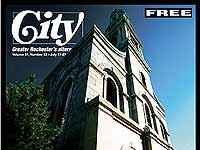
The other crisis for Catholics
Jul 10, 2002 - More »
Latest in Featured story
More by Jack Bradigan Spula
-
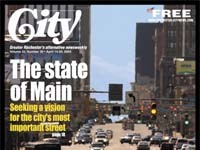
The state of Main
Apr 14, 2004 -
School improvement: the price is wrought
Apr 7, 2004 -
Hour of power
Mar 31, 2004 - More »
